According to the different physical and chemical properties of copper ores, single or several combined beneficiation processes are often used to separate useful minerals from gangue minerals as much as possible, remove or reduce harmful impurities, and obtain copper concentrate for smelting or other industrial needs. Among them, the main methods for extracting copper are copper flotation and leaching.
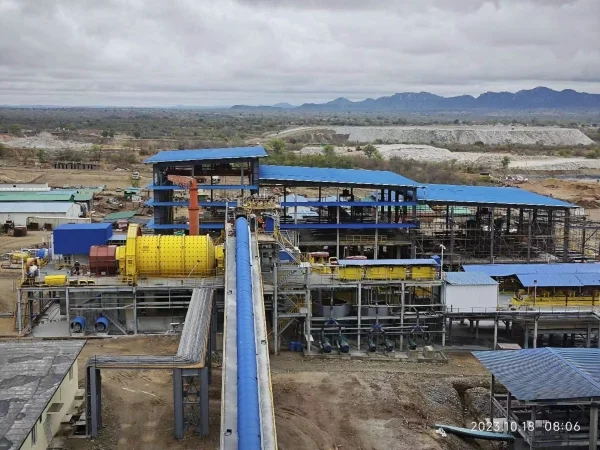
01 Copper flotation method
(1) Single copper sulfide flotation process
The composition of single copper sulfide minerals is simple. The main copper minerals are chalcopyrite, chalcocite, bornite, indigo copper ore, and a small amount of copper oxide minerals. Gangue minerals vary depending on the type of ore deposit, including quartz, calcite, feldspar, dolomite, sericite, chlorite, etc. Since copper and gangue minerals are quite different, flotation is a commonly used treatment method. Depending on the occurrence, its structural composition varies greatly, resulting in different degrees of difficulty in monomer dissociation. Grinding fineness is the key to affecting the flotation index of copper sulfide. There are generally three types of copper sulfide flotation processes:
Single-stage grinding - flotation method
This process is suitable for processing copper minerals with coarse and uniform particle size, copper minerals and gangue are loose, and the contact edges are smooth and flat. Generally, the grinding fineness of the original ore is 50-60% below 200 mesh. At this time, the copper mineral monomer is dissociated. After rough flotation, scavenging, and one to three levels of concentrating, good flotation indicators can be obtained. The flotation process is simple and the processing cost is low.
Single-stage grinding-flotation-coarse concentrate regrinding process
This process is generally suitable for porphyry copper or copper-molybdenum ores with single copper sulfide ores. According to the embedding characteristics of copper minerals, the original ore is ground to 50-70% over 200 mesh. A large amount of tailings are discarded during the roughing and scavenging process. After the roughing concentrate grinding, the copper concentrate may need two to three times of concentrating. The first flotation tailings in the flotation cycle can be discarded during the scavenging process, or returned to the roughing cycle after concentration. Some copper concentrators regrind the middlings for post-processing. If the ore grade is low and the output is large, this process is more effective. In addition, since the re-grinding particle size of the coarse concentrate is finer, the monomer dissociation degree of copper minerals and gangue minerals is better, and the quality of the flotation concentrate is higher.
Two-stage grinding - two-stage (or single-stage) flotation process
For uneven coarse and fine copper-embedded ores, it is necessary to grind more than 80% of the ore below 200 mesh to dissociate most of the copper minerals. In this process, two-stage grinding is better than one-stage grinding in terms of grinding efficiency and prevention of over-grinding. With two-stage grinding and two-stage flotation, a part of the coarse copper minerals can be floated out after the first stage of coarse grinding of the ore to avoid over-crushing. This part of the concentrate has a high grade and can be used directly as a concentrate, or it can be used for the final beneficiation, or it can be combined with the concentrate after the two-stage grinding flotation to enter the joint beneficiation. If there are fewer coarse copper minerals, the two-stage grinding and one-stage flotation process can also be used. Flotation recovery adopts scavenging, and then two to three beneficiations are carried out. The medium ore is generally returned to the second grinding cycle. Relatively speaking, its process cost is higher, and the equipment configuration and production operation are also more complicated.
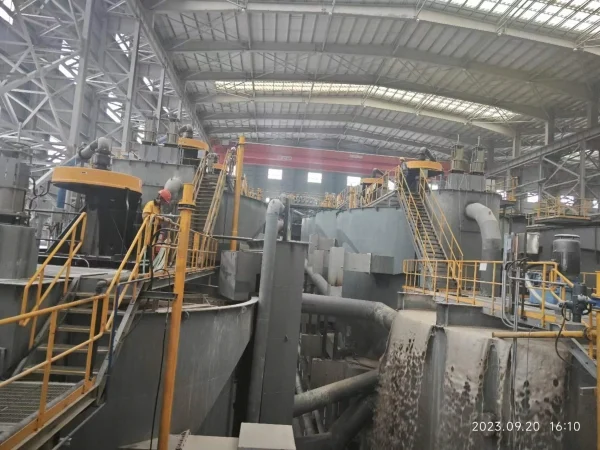
China Copper Concentrator
(2) Flotation of polymetallic copper sulfide
In addition to a variety of copper minerals, polymetallic copper sulfide ores also contain pyrite, galena, sphalerite and other minerals. The mineral composition structure is relatively complex and the minerals are closely related. According to the above ore characteristics, the polymetallic copper sulfide flotation process includes the following:
Multi-stage flotation process
This process is mainly aimed at copper sulfide minerals containing iron sulfide. The mineral composition is simple. Therefore, the multi-stage flotation process is a common process for copper sulfide flotation. The focus is on the separation of copper and sulfur. The commonly used multi-stage roughing-multi-stage concentration-sweeping flotation process has a high recovery rate, but it is difficult to obtain ideal treatment effects for copper sulfide ores with more complex compositions.
Gradual priority flotation process
The graded priority flotation process is suitable for copper sulfide ores with more complex compositions. The types of such copper ores are complex, mainly azurite and arsenic copper ore. The key point is also the separation of copper and sulfur. Conventional flotation process is difficult to obtain qualified copper concentrate due to the complex equipment. Different types of copper minerals have different floating speeds. Therefore, the easy-to-float copper minerals are roughly selected, the difficult-to-float copper minerals are re-grinded and the intermediate ore is reprocessed, and the copper concentrate is jointly recovered to ensure the grade and recovery rate of the copper concentrate.
Flotation-mixed concentrate separation process
This process is mainly suitable for low-grade copper-sulfur ores with complex symbiotic relationships with chalcopyrite, sphalerite, and galena. After rough grinding and rough selection to discard most of the gangue minerals, copper-lead-zinc concentrate can be obtained. Then the concentrate is separated and treated to obtain a single copper mineral. This process can recover copper, lead, and zinc minerals separately, but it is also easy to cause incomplete separation of mixed concentrates.
Homogeneous flotation process
This process uses the floating speed to separate metal minerals such as copper, lead, and zinc. The minerals with fast floating speeds are separated from the minerals with slow floating speeds. This can eliminate the influence of residual reagents and reduce the amount of reagents used. However, the process is more complicated, the consumption cycle is long, and there are more grinding equipment.

Myanmar Copper Concentrator
(3) Direct flotation of copper oxide
Direct flotation of copper oxide is a method of direct flotation without pre-sulfurization using high-grade fatty acids and their soaps and amine collectors. It mainly includes fatty acid flotation, amine collector flotation, chelating agent-neutral oil flotation, emulsion flotation, etc. It is suitable for copper oxide with simple structure and single properties.
Fatty acid flotation method
Fatty acids and their soaps are used as collectors. Gangue inhibitors such as water glass, phosphates, and pulp inhibitors such as sodium carbonate are also added during flotation. Fatty acids and their soaps can float malachite and azurite. Fatty acids with different hydrocarbon chains can float malachite. As long as the hydrocarbon chain is long enough, its collection ability is very strong. Fatty acid flotation method is suitable for copper oxide minerals whose gangue minerals are not carbonates. If they contain a large amount of iron and manganese minerals, the flotation index will deteriorate, and the ore mud will cause the fatty acid to fail.
Amine collector flotation method
Also known as cationic collector flotation method, it is a commonly used flotation method for non-ferrous metal oxide ores. Amines are widely used as collectors for flotation in malachite, chalcopyrite, chlorite and other minerals in copper mines. Amine collectors are selective for copper oxide because amines also have a collecting effect on many gangues. Desliming is required before separation, but for muddy copper oxide, pre-desliming will lead to copper loss. Therefore, the premise of selecting amine flotation is the selection and control of inhibitors in gangue minerals. Currently, commonly used gangue inhibitors include seaweed powder, lignin salts (or cellulose lignin sulfonates), polyacrylic acid, etc.
Chelating agent-neutral oil flotation method
This method uses chelating agents and neutral oils for flotation, which is suitable for difficult-to-select oxidized copper ores. It not only has good selectivity and good collecting effect, but also can ensure separation indicators and reduce reagent consumption. And chelating agents have selective inhibition. But the chelation cost is relatively high. Currently, commonly used chelating agents include octyl-substituted basic dye malachite green, potassium octyl hydroxamate, benzotriazole and neutral oil emulsifier, N-substituted imine diacetate, polyamine and organic halide.
Complexing agent flotation method
The flotation method mainly involves first sulfiding the copper oxide mineral, then adding a copper complexing agent to form a stable surface for the lipophilic mineral, and then covering the mineral surface with a neutral oil emulsion to create a strongly hydrophobic floating state, so that the mineral can be firmly attached to the bubble and complete the separation.

Copper extraction plant in Ghana
(4) Flotation of copper oxide sulfide
Flotation of copper oxide sulfide mainly includes ordinary sulfide flotation and hydrothermal sulfide flotation.
Ordinary sulfide flotation method
The flotation method is to first sulfide the copper oxide mineral (using sodium sulfide or other sulfiding agents), and then use a high-grade xanthate collector for flotation. In the sulfidation operation, the lower the pH value of the slurry, the faster the sulfidation operation, and the easier it is for sulfides such as sodium sulfide to sulfidate. Sulfide flotation is mainly used to treat copper-based carbonate copper oxide minerals, such as malachite, chalcopyrite and other minerals, or hematite. However, special treatment is required for malachite silicate, otherwise the sulfidation effect is poor or even impossible to sulfidate.
Hydrothermal sulfide flotation method
This flotation method extends the conventional sulfide flotation method, performs sulfidation operation under hot pressure conditions, and reacts sulfur with copper oxide under hot pressure conditions to obtain stable and easy-to-select artificial copper sulfide minerals. Then the same mineral is recovered by the method of flotation of copper sulfide with warm water. This method strengthens the pretreatment of the ore - the presulfidation process, but this process requires high temperature, high fuel consumption, and long maintenance time.
(5) Mixed copper flotation
For this type of ore, Xinhai Liquid generally uses sulfide flotation. There are two process flows. One is to first select copper sulfide minerals, and then select copper oxide minerals after the tailings are sulfided; the other is to float copper oxide and copper sulfide minerals at the same time after sulfidation. The process conditions for the simultaneous flotation of copper oxide minerals and copper sulfide minerals are basically the same as those for copper oxide ore. As the content of copper oxide minerals in the ore decreases, the amount of sodium sulfide and collector should be reduced. When copper oxide minerals are floated after sulfidation, copper sulfide minerals can float well.

Mongolia Copper Ore Processing Plant
2. Copper leaching process
(1) Heap leaching process
The heap leaching process is to place the crushed copper oxide ore (the part mixed with copper sulfide ore) on the leaching pad, spray a strong acid solution, and let it penetrate into the crushed gravel. Over time, the copper in the gravel is leached into the solution and becomes a precious liquid, which is collected and pumped to the solvent extraction equipment for further purification. The heap leaching process is widely used for the leaching of low-copper surface mines and waste mines.
(2) Tank leaching process
It is a leaching method commonly used in early copper hydrometallurgy. In the leaching tank, a concentrated sulfuric acid solution is used to leach the oxide ore containing 1-2% copper (particle size -1cm). Due to the high copper concentration in the leaching solution, it can be directly used for copper plating.
(3) In-situ leaching process
In-situ leaching can be used to treat the residual ore of old mines or unmined oxidized poor copper ore. For abandoned mines or uneconomic copper ores that are recovered by other processes, the in-situ leaching process has great potential. In the case of in-situ leaching, the well spacing is generally 30×30cm (or 15×7.5m), the borehole diameter is 15-25cm, and there is a plastic pipe in the hole that goes straight to the ore body. The leaching agent flows into the ore body along the plastic pipe, and the leaching liquid is pumped back to the ground from the bottom of the ore body.
(4) Stirring leaching process
The copper stirring leaching process is carried out in a leaching tank equipped with a stirring leaching device. Fine-grained (-75um90%) oxide or sulfide ores are leached with concentrated sulfuric acid solution. The main leaching methods are air stirring and mechanical stirring.
Due to the small feed size and sufficient stirring, the stirring leaching speed is faster and the leaching rate is higher than that of pool leaching. Therefore, stirring leaching can not only process high-grade copper ores, but also process low-grade copper ores (Cu<1%) such as tailings.
03 Summary
The above is how to extract copper from ore. If you have any other questions, please leave a message or contact our online customer service, we will contact you as soon as possible.
- Random article
- Popular articles
- Popular comments
- Bauxite Gravity and Flotation Process
- How to Extract Gold Using Mercury
- Arsenic Gold Ore Oxidation Roasting Pretreatment Process
- Prioritized Flotation Process for Lead-zinc Ore
- Nickel ore priority flotation process(Sulfide ore)
- Laterite Nickel Ore Hydrometallurgical Process for Oxide Ore
- Processing Lithium Ore: Artificial Selection, Gravity Separation, Flotation



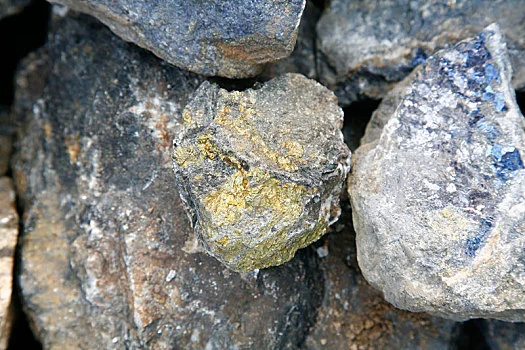


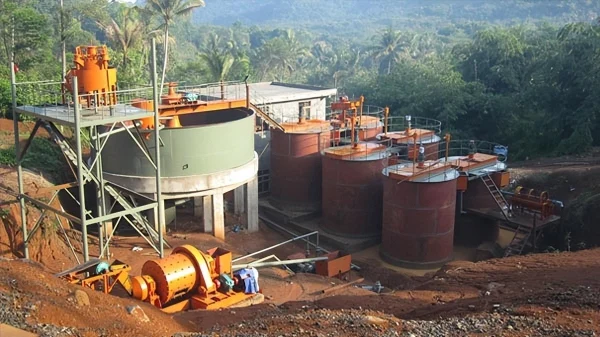
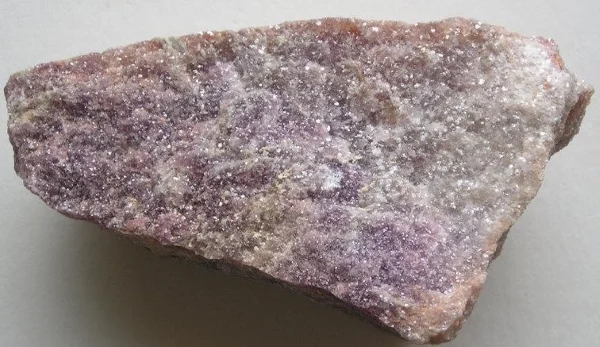

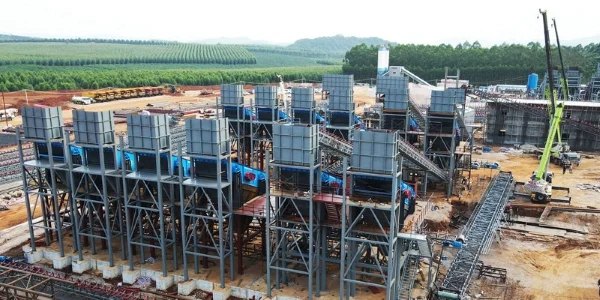
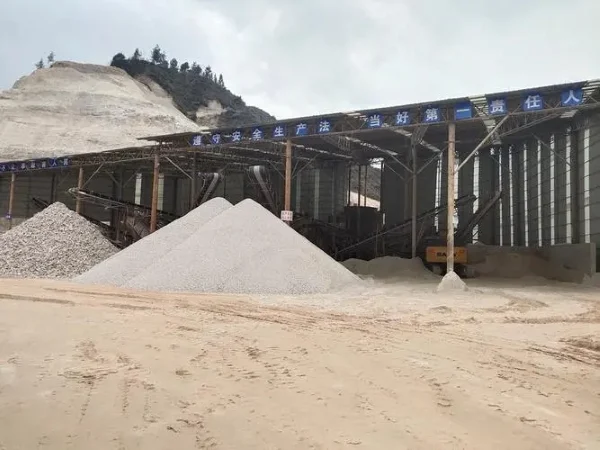




Leave a message with your needs or comments
Add comment: